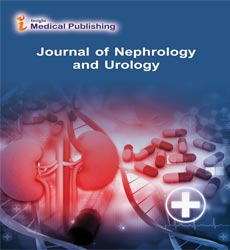Oxidative Stress as a Key Signalling Pathway in Placental Angiogenesis Changes in Preeclampsia
Abstract
The aim of this study was to determine the prevalence of FD among Saudi patients on hemodialysis.
Methods: This prospective study was conducted in three major hospitals in Saudi Arabia. All adult patients (> 18 years old) attending the dialysis unit who have end-stage renal disease (ESRD) and on hemodialysis were included. Known patients with FD and those who refused to participate in the study were excluded. All eligible patients were screened for FD using Dry Blood Spot (DBS) for α-Gal A. A positive DBS (enzyme activity < 40%) was followed by another confirmatory enzyme assay if the second DBS sample was also positive (enzyme activity < 40%), a Sanger sequencing of the GLA gene was performed.
Results: A total of 619 patients with ESRD and on hemodialysis were screened for FD using DBT for α-Gal A enzyme level. Enzymatic activity was below 40% in 11 samples. On retesting, three females had < 20% enzymatic activity suggesting FD. Sanger sequencing of these three females showed the variant c[1055C>G] (p.[Ala352Gly]) confirming the diagnosis of FD. Family screening of one of these three patients revealed one asymptomatic female carrying the same mutation.
Conclusion: The prevalence of FD in this cohort was 4.8 per 1000 patients. Screening of Fabry patients with ESRD seems to be a cost-effective strategy. Furthermore, screening of relatives of patients identified by screening enhances this screening strategy.
Open Access Journals
- Aquaculture & Veterinary Science
- Chemistry & Chemical Sciences
- Clinical Sciences
- Engineering
- General Science
- Genetics & Molecular Biology
- Health Care & Nursing
- Immunology & Microbiology
- Materials Science
- Mathematics & Physics
- Medical Sciences
- Neurology & Psychiatry
- Oncology & Cancer Science
- Pharmaceutical Sciences
